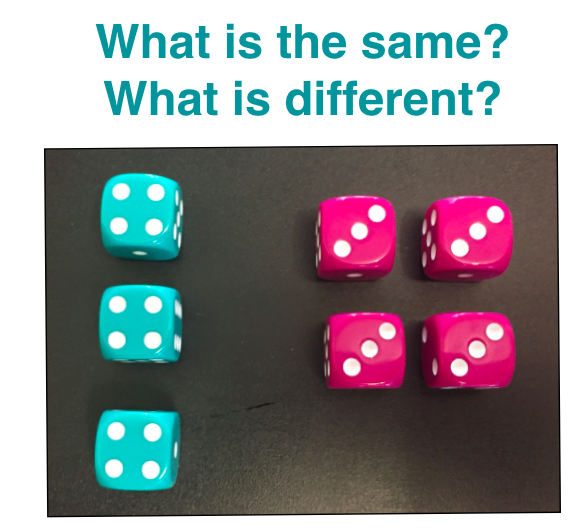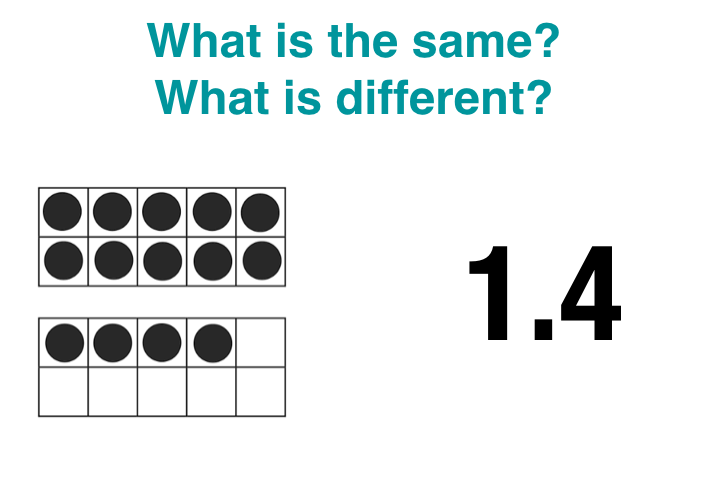What is Same or Different?
This routine, also known by some as "Alike or Different" is a routine in which the teacher presents two numbers, shapes, or objects to be compared. The teacher carefully selects what will be compared to focus student thinking on a desired mathematical concept. This routine is powerful because it fosters so many curricular competencies, including communication, reasoning, constructing arguments, etc in relation to mathematical ideas. Brian Bushart, with the support of several other amazing Math educators have created an outstanding website with examples that have been categorized into galleries based on math concepts.
What does it look like in the classroom?
- it can be incorporated at any point during a day or lesson.
- the teacher presents the students with two or more numbers, shapes, etc. Careful selection of the numbers and shapes to be compared allows the teacher to focus student thinking on the desired mathematical concept.
- The students are asked to think about ways in which the two are the same or different? Give quiet thinking time first. You may also wish to provide to have students share their thinking in pairs. Then ask for volunteers to share with the class.
What is the learning?
Depending on what objects, shapes or numbers are selected to be compared, many content areas can be a focus, including:
Some potential learning intentions for curricular competencies include
- comparing quantities
- place value
- addition, subtraction, multiplication, and division
- geometry
- fractions
- measurement
Some potential learning intentions for curricular competencies include
- Reasoning and Analyzing - use reasoning to construct viable arguments when comparing objects, shapes, and numbers
- Understanding and Solving - engaging in problem solving
- Communicating and Representing - explaining and justifying similarities and differences
- Connecting and Reflecting - identifying relationships between objects, shapes, and numbers
Supporting websites/blogs/videos:
- https://samedifferentimages.wordpress.com
- Twitter Hashtag #samedifferent
- Video example in a Kindergarten class http://bit.ly/2nTyKVp


